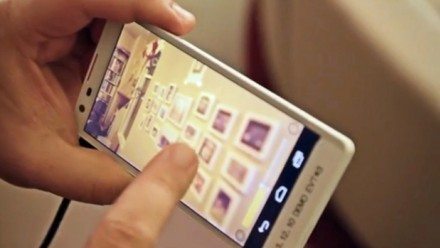NASA plans to send Google smartphones with state of the art 3D sensing technology into orbit to use them as eyes and brains for its newest sci-fi inspired machinery. The gadgets will be installed into hovering robots and boost the agency’s Synchronized Position Hold, Engage, Reorient, Experimental Satellites, otherwise known as SPHERES, on the International Space Station.
NASA hopes that this will allow SPHERES to relieve astronauts of their daily chores and, perhaps, even handle the tricky duties in outer space. New Google smartphones being part of the company’s futuristic Project Tango AD mapping service with the new augmented reality technology are scheduled to be transported on July 11 via a cargo spacecraft.
There, the gadgets will be connected to another visionary technology, SPHERES, inspired by none other than the legendary movie Star Wars where a hovering football-sized robot helps Luke Skywalker practice his Jedi lightsaber skills.
NASA’s SPHERES can navigate because of microgravity in the space station’s interior and microscopic blasts of CO2 that propel the globes around two and a half centimeters per second.
When just sent into orbit in 2006, SPHERES’ functions were limited to slowly moving around the space station, so in 2010 NASA’s Ames Research Center in Mountain View based in California set its engineers with a task to smarten up the robots.
Smart SPHERES project manager Chris Provencher told reporters in an interview that the company “wanted to add communication, a camera, increase the processing capability, accelerometers and other sensors.”
“As we were scratching our heads thinking about what to do, we realized the answer was in our hands,” Provencher said. “Let’s just use smartphones.”
As a test drive, the engineers then purchased phones at Best Buy, added extra batteries, built in shatter-proof displays and sent the gadgets to the space station, where astronauts attached the altered phones to SPHERES. This simple manipulation allowed the robots to be more like their sci-fi prototypes, propelling them to the next level of sense and visual capabilities.
However, off-the-rack smartphones were still not enough to allow SPHERES the kind of independence engineers envisioned. This is where NASA turned to Google which just recently developed experimental smartphones that can give “a human-scale understanding of space and motion.”
The phones include batteries tested in space and plastic connectors and were opened in such a way that the sensors and touchscreen face outwards when attached to the SPHERES.
The futuristic Project Tango handsets have an infrared depth sensor and a motion-tracking camera, which will allow to create a 3D map of the station that should help the SPHERES navigate.
“This type of capability is exactly what we need for a robot that’s going to do tasks anywhere inside the space station,” Provencher commented, adding that it “has to have a very robust navigation system.”











